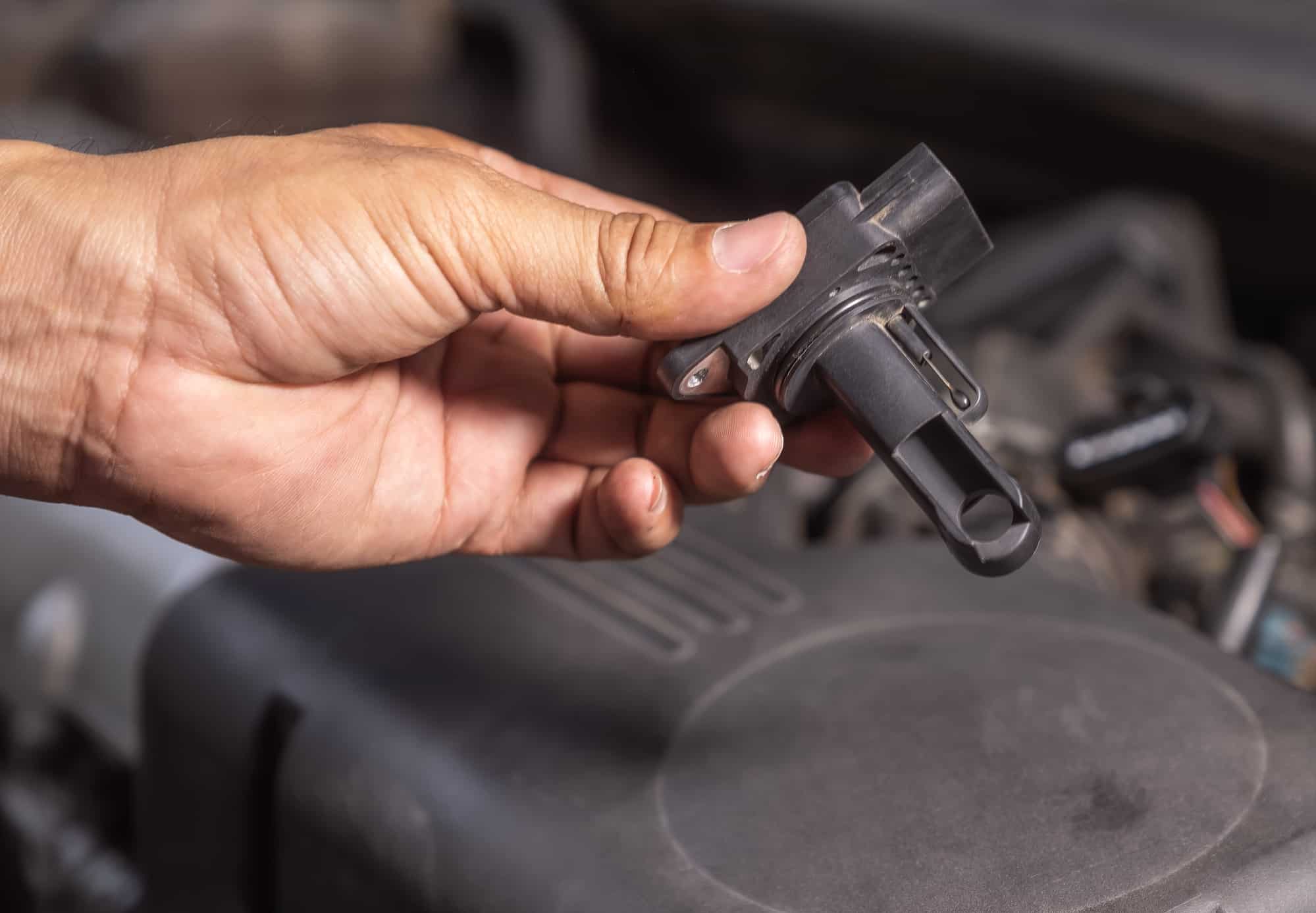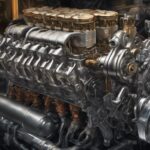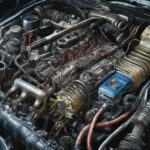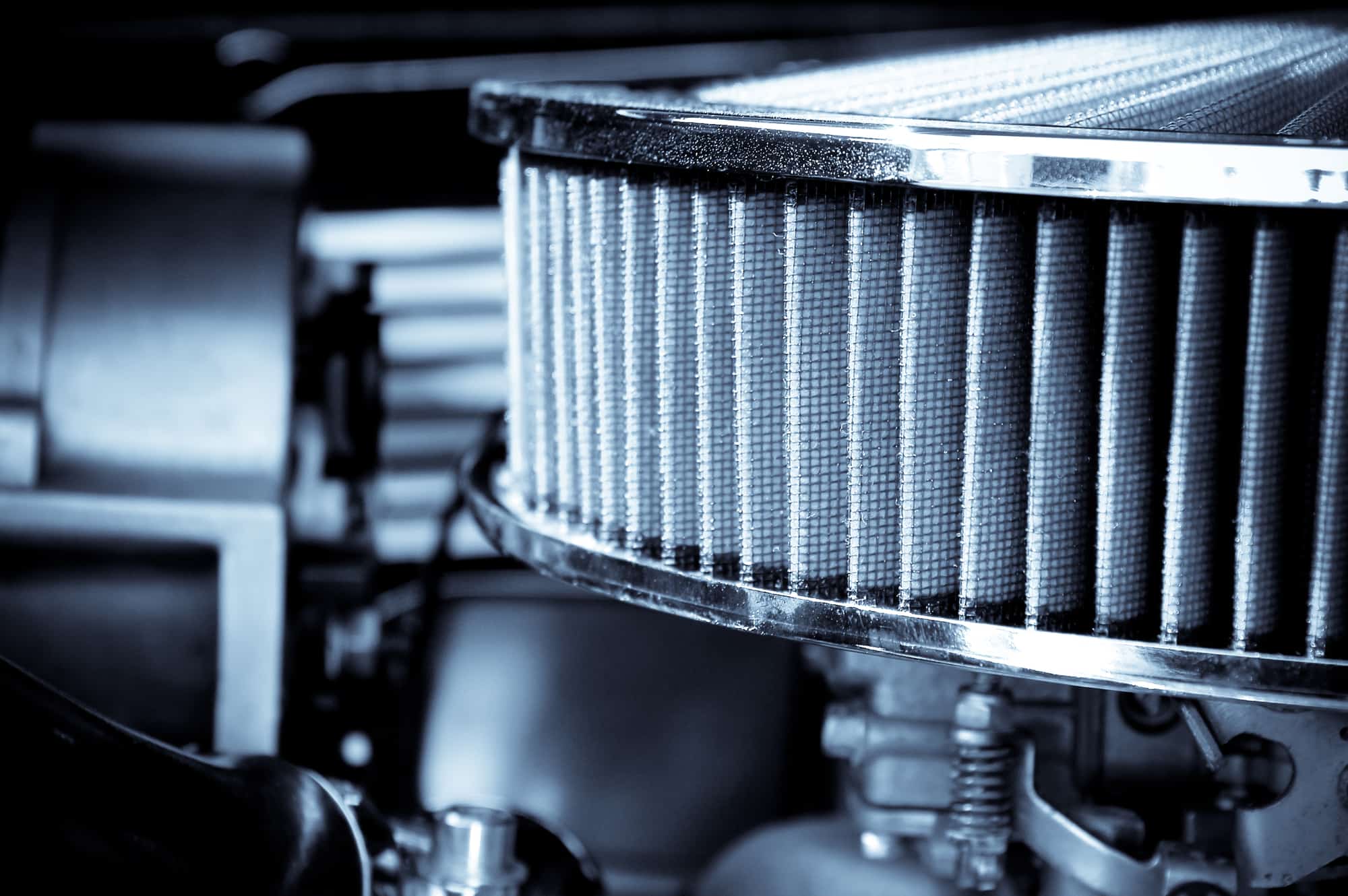If you are trying to clear the diagnostic trouble code (DTC) P0101, then you may already know that it is often related to the mass air flow sensor. But what exactly does P0101 mean and what causes it?
As a general rule, the OBD-II trouble code P0101 Mass Airflow (MAF) Circuit Operating Range or Performance Problem is stored in memory when the ECU detects that the Mass Air Flow (MAF) sensor readings are outside the expected frequency range. This usually means that the mass air flow sensor is dirty, damaged or has failed and is no longer providing accurate air flow data to the ECU.
What can cause a MAF sensor code?
Sometimes error code P0101 is referred to as a MAF (mass air flow) sensor code. This is because it is usually a problem with the MAF that triggers the code.
The Mass Air Flow Sensor (sometimes called the air flow meter) is one of the main electronic components of the fuel delivery system. Its job is to measure the mass of air entering the engine.
This information is used by the ECU to determine the amount of fuel needed to achieve the stoichiometric ratio consisting of 14.7 parts of air per each part of fuel.

This calculation is then adjusted after analyzing the data from the rest of sensors, especially the oxygen sensor feedback that is used as a key input for the corrections of the next computing cycle.
In other words, without the MAF data, the ECU would be nearly blind regarding air flow making it very difficult to deliver the correct amount of fuel via the injectors.
On modern vehicles, a “reference” MAF value is calculated by the ECU using the information from the rest of the engine sensors. This calculated value is compared to the actual MAF output in order to check the sensor performance.
The trouble code P0101 is stored when the ECU detects a significative variation between the calculated MAF value and the actual MAF value.
7 Symptoms Of trouble Code P0101
If the MAF sensor is not working properly, it will not be able to send the ECU the correct air flow value. This means the ECU will not be able to calculate the correct amount of fuel each injector needs.
Because of this, the most common symptoms associated with engine code P0101 are related to the performance of the engine.
Here are the most common symptoms of trouble code P0101.
1. Check Engine Light on dashboard
If the MAF sensor is not properly keeping track of the amount of air getting into the engine, then this is going to mess up the fuel to air ratio in the engine cylinders.
This will lead to bad engine performance and engine misfires that can trigger engine trouble codes such as P0101.
Most modern vehicles will flash the check engine light when this happens.
2. Difficulty starting the engine
A bad or dirty MAF sensor won’t be able to accurately determine the air flow into the engine.
If the MAF sensor reading is outside the acceptable parameters, then the ECU will use a default value to determine the amount of fuel that is needed for the engine to run after it starts.
Under extreme conditions such as cold weather, it may be more difficult to start the engine if the air density is inaccurate as the fuel is more difficult to vaporize when it is cold. At best, the engine will run rich until it warms up.
3. Poor fuel economy
As outlined above, a bad or dirty MAF sensor will cause the ECU to default to a stored air flow reading.
This means that the engine will usually use more fuel than is necessary as the ECU cannot accurately determine the air flow rate on a realtime basis.
4. Rough Engine idle
A bad MAF will cause a rough engine idle if the ECU cannot properly compensate for the lack of air flow information.
Most of the time if the MAF is no longer working properly you will notice a higher than normal engine RPM when you start the engine and it will feel like the engine is running rough.
If you try to rev the engine too quickly it may cut out or struggle to stay running.
5. Engine hesitation during acceleration
A bad mass air flow sensor won’t accurately measure the amount of air coming in through the air filter.
This will cause a slight delay in fuel delivery to the combustion chambers during sudden acceleration leading to a temporary lack of power.
In response, the ECU will sense the drop in engine vacuum first and then using other sensors, will decide if more fuel is required.
6 Engine hesitation under load
If the MAF sensor is not working properly, this will adversely affect engine performance.
If you are driving uphill, towing a heavy load, or demanding power from your engine, you are bound to notice a problem with engine performance and power output.
7 Gas smell from the exhaust pipe
If the engine is running without a properly functioning MAF, as outlined above, fuel economy will be affected.
A failure to deliver the exact amount of fuel to the engine, will affect the fuel to air ratio in the combustion chambers causing the engine to run rich, and possibly causing unburnt fuel to escape into the exhaust.
What Causes Trouble Code P0101
The most common causes of data trouble code P0101 are:
1. MAF sensor wiring is open damaged
If the wiring that connects the MAF to the engine wiring loom is damaged, then this can cause a loss of connection between the mass air flow sensor and the ECU.
If the ECU detects that the MAF circuit is open or has shorted, then it will trigger the a check engine light.
Of course, if the wiring is broken then the MAF sensor cannot relay the air flow data to the ECU, so this will trigger an error code P0101.
2. Damaged MAF sensor connector
If the MAF connector plug is loose, corroded, disconnected or is damaged with bent pins then this can cause the error P0101.
A damaged connector will interrupt the signal between the MAF and the ECU can lead to a Mass Airflow (MAF) Circuit Operating Range or Performance Problem.
3. Dirty or clogged MAF sensor
One of the most common reasons for code P0101 is a dirty or clogged mass air flow sensor.
In this case, the MAF is not necessarily damaged or broken, it’s just unable to generate an accurate air flow reading because of a contaminated sensor surface.
4. Bad MAF sensor
Another very common reason for code P0101 is a broken or failed MAF sensor.
A sensor will either fail completely or will become less sensitive and will only provide readings that are out of range.
Over time, the sensor face can become less sensitive and as such, will not be able to measure the volume of air coming into the intake manifold as accurately as a new sensor.
This is very common on older vehicles (10 years or more), and the only solution is to replace the sensor.
Sometimes a sensor will fail completely. This can be caused by damage or failure of the sensor surface, or failure of one of the electronic components within the sensor.
5. Intake manifold air leaks
Sometimes an air leak in the intake manifold can be mistaken for a bad MAF sensor.
If there is air leaking into the manifold after the MAF sensor this will cause a problem as the reported air flow rate will be different to the actual air flow into the engine.
This will trigger the P0101 code along with other MAF related trouble codes such as P0102, P0103 and P0104.
intake manifold air leaks are also referred to as vacuum leaks. They are usually caused by a damaged or split vacuum hose that allow unmetered air to enter the engine.
It’s a common problem in older diesel cars such as BMW, Volkswagen and Mercedes-Benz.
6. Badly clogged or restricted air filter
If the air filter is blocked to the point that the air flow to the MAF sensor is severely restricted, this can cause the Mass Airflow (MAF) Circuit Operating Range or Performance Problem that triggers trouble code P0101.
How To Diagnose The Cause Of Trouble Code P0101
For the purpose of this article, it’s assumed that you have a basic knowledge of safety precautions while working on your vehicle.
Always refer to the appropriate OEM literature when possible. Original manufacturer diagnostic procedures should always have precedence over a generic workflow.
That said, let’s start the diagnostic process!
1. Preliminary steps
To discard a possible intermittent DTC condition, you’ll need to clear the ECU memory and complete a driving cycle.
- Read data trouble codes and take note of them.
- Clear data trouble codes memory.
- Perform a driving cycle (at least 5-10 minutes).
If the check engine light stays off then you may have an intermittent problem.
If the light lit during your driving cycle then continue with the diagnostic process.
It’s not unusual to get other error codes along with P0101, these include P100, P0102, P0103, P0104, P0171, P0174 and P0299.
2. Visual Inspection
> Vacuum hoses: perform a meticulous visual inspection of all vacuum lines, including MAP sensor, PCV, brakes vacuum booster, fuel pressure regulator, etc.
Also, check the air intake hose looking for any sign of deterioration or leak.
> MAF condition: to inspect the MAF condition you will need to remove it from the vehicle first.
Be sure to check the MAF wiring after you unplug it from the sensor.
Carefully check the condition of the MAF sensor inside the housing. You are looking for cracks in the sensor and excessive dirt that may be hindering its performance.
> Air Filter inspection: a clogged air filter could decrease the Turbocharger/Supercharger boost pressure significantly.
Check the air filter condition and replace if necessary.
Fix any wiring problem before continuing.
3. Electrical Tests
> MAF electrical tests: due to this sensor importance you should perform a comprehensive electrical test including continuity, reference voltage, ground, and supply voltage.
Refer to our MAF article for detailed instructions about this procedure.
4. Scan Tool Tests
> Mass Air Flow Sensor live test: using an automotive diagnostic scanner you can perform a MAF “live test”. First, enter in KOEO mode and lock the MAF sensor related data on the display.
Depending on your vehicle and scan tool maker you may have several items to check. Focus on the calculated MAF output, many times expressed in grams per second.
You could also lock on screen the MAF output voltage if you can’t find it’s calculated value.
Once you are ready to start the engine to enter KOER mode. If your scan tool has a graphing ability turn it on. Graph engine RPM and MAF output at the same time.
Gently accelerate and decelerate the engine. The resulting lines should be similar, increasing and decreasing simultaneously. The greater the difference between them the greater the probability that you have a bad mass air flow sensor.
How To Fix Trouble Code P0101
Depending on the diagnostics results you may need to do the following:
1. Repair the MAF sensor wiring/connectors
Sometimes you can perform a repair if there is a problem with the wiring to the MAF sensor, such as a break to one of the wires or damage to the outer sheath.
It’s usually not possible to replace the entire wiring loom, but you should be able to repair the break with a soldering iron and new heat resistant outer sheath.
If the connector plug is cracked or damaged you should replace it with a new one rather than trying to repair it.
2. Clean the MAF sensor
Cleaning the MAF sensor is a good idea if the wiring and the sensor itself look undamaged. Sometimes the sensor (or the hot wire) can become covered in grease or dirt and this can negatively affect its performance.
The hot-wire sensors of a MAF are very delicate. You should never use any decarbonizing acid, aggressive detergent or similar product on a MAF sensor, as these will damage the sensor.
To clean the sensor surface, you should only use a Mass Air Flow Sensor cleaner (MAF cleaner) or electrical contact cleaner. Try not to touch the sensor surface with your hands as grease and dirt from your hands can damage it.
Let the sensor surface dry completely before refitting it to the vehicle.
3. Replace the MAF sensor
Sometimes the MAF sensor will need to be replaced entirely. If the vehicle is over 5 years old and you’ve already tried cleaning the MAF, then you should try swapping out the sensor for a new one.
I’d recommend buying an OEM sensor, as cheap aftermarket sensors don’t always work properly and often fail quickly.
4. Replace the air filter
If there is no obvious damage to the MAF sensor or it’s wiring then you should check the air filter box for a build up of debris or blockages. It’s also a good idea to change the air filter.
Air filters are cheap and a dirty air filter can make a huge difference when it comes to engine performance. I recommend that air filters should be changed every 12 months, whether there are issues with the air intake or not.
This will extend the life of the MAF sensor and help to avoid error codes like P0101.
How are the Mass Airflow (MAF) Circuit Operating Range or Performance Problem and Manifold Air Pressure (MAP) Barometric Pressure Sensor Electric Circuit Output Range and Performance Problem related in causing OBD-II trouble codes?
When the Mass Airflow (MAF) Circuit Operating Range or Performance Problem occurs, it can trigger trouble code P0106 explanation in OBD-II systems. Similarly, issues with the Manifold Air Pressure (MAP) Barometric Pressure Sensor Electric Circuit Output Range can also lead to the same trouble code, indicating a related performance problem.
5. Repair vacuum leaks
If during the diagnosis you come across damage to the air intake hoses or the intake manifold, then you will need to replace the damaged parts before proceeding.
P0101 OBD-II Trouble Code Summary
- P0101 Technical Definition: Mass Air Flow (MAF) Circuit Range/Performance
- P0101 Meaning: A problem with the MAF sensor readings
- Most common cause: Faulty/Dirty Mass Air Flow Sensor, possible air leak
- Risks for the engine/driver: LOW You should get it checked out ASAP but your car should be safe to drive
- Emissions severity: HIGH.
The car probably won’t pass emissions testing
- Estimated repair time: 1-2 Days
- Estimated repair cost: $100-300+ (if the MAF needs replacing it will be more expensive than just cleaning it)






